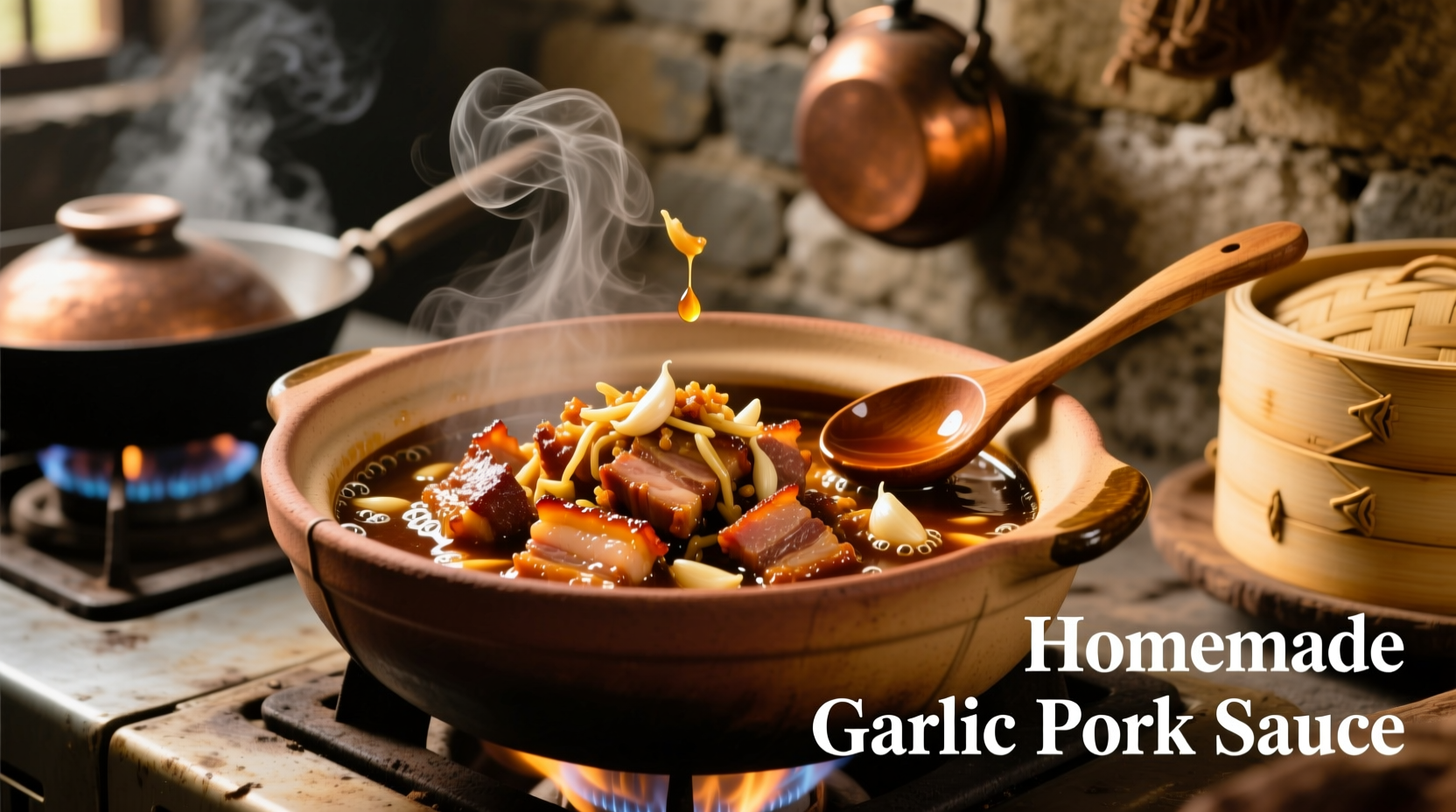Garlic pork sauce transforms simple ingredients into extraordinary dishes with its rich umami depth and aromatic punch. This versatile sauce works equally well as a marinade, stir-fry base, or dipping condiment, making it essential for any home cook's repertoire. Unlike store-bought versions that often contain preservatives and artificial flavors, homemade garlic pork sauce lets you control quality and customize to your taste preferences.
The Essential Garlic Pork Sauce Recipe
Creating authentic garlic pork sauce requires balancing savory, sweet, and aromatic elements. Professional chefs emphasize using fresh garlic rather than pre-minced varieties for superior flavor development. The cooking technique matters as much as the ingredients—proper temperature control prevents bitter garlic while maximizing umami compounds from the pork.
| Ingredient | Quantity | Professional Tip |
|---|---|---|
| Fresh garlic, minced | 6 cloves | Use a microplane for even texture that caramelizes perfectly |
| Pork belly, finely diced | 8 oz | Partially freeze for easier, uniform dicing |
| Soy sauce | 3 tbsp | Use brewed soy sauce, not chemical酱油 |
| Shaoxing wine | 2 tbsp | Substitute with dry sherry if unavailable |
| Brown sugar | 1 tbsp | Adjust to balance garlic's sharpness |
| Water or stock | 1/4 cup | Homemade stock enhances depth significantly |
Step-by-Step Preparation
- Render the pork: Cook diced pork belly over medium heat until golden and crisp, about 8 minutes. Remove 1 tablespoon of rendered fat for cooking garlic.
- Toast the garlic: In reserved pork fat, sauté minced garlic until fragrant but not browned (about 1 minute). Proper temperature control prevents bitterness.
- Build the sauce: Add soy sauce, Shaoxing wine, brown sugar, and water. Simmer 5 minutes until slightly thickened.
- Finish: Return crispy pork to sauce. Cook 2 more minutes until flavors meld. Remove from heat immediately to preserve garlic's bright flavor.

Regional Variations Compared
Garlic pork sauce appears across Asian cuisines with distinctive regional adaptations. Understanding these differences helps you select the perfect variation for your dish:
| Regional Style | Key Ingredients | Best Used For | Flavor Profile |
|---|---|---|---|
| Cantonese | Oyster sauce, rock sugar | Steamed fish, roasted meats | Balanced sweet-savory, subtle garlic |
| Sichuan | Chili oil, Sichuan peppercorns | Stir-fries, dan dan noodles | Numbing heat, bold garlic |
| Hakka | Fermented black beans, ginger | Braised dishes, tofu | Deep umami, complex garlic notes |
| Modern Fusion | Honey, rice vinegar | Glazes, dipping sauces | Bright acidity, pronounced garlic |
When Garlic Pork Sauce Works Best (And When It Doesn't)
Understanding context boundaries prevents culinary disappointment. This sauce excels with certain applications but fails in others:
- Ideal applications: Marinating proteins (especially pork and chicken), stir-fry base, dipping sauce for dumplings, glaze for roasted vegetables
- Limited effectiveness: Seafood dishes (overpowers delicate flavors), creamy sauces (oil separation issues), cold applications (garlic flavor becomes harsh)
- Temperature considerations: Best served warm—reheating multiple times diminishes garlic's aromatic compounds. USDA food safety guidelines recommend consuming within 4 days when refrigerated (USDA Food Safety Basics).
Storage and Shelf Life Optimization
Proper storage maintains flavor integrity while ensuring food safety. The high garlic content creates specific preservation challenges:
- Refrigerate in airtight container for up to 4 days
- Freeze in ice cube trays then transfer to bags for up to 3 months
- Never store at room temperature longer than 2 hours (per FDA food code)
- Add fresh garlic after reheating frozen sauce to restore aromatic qualities
Troubleshooting Common Issues
Even experienced cooks encounter problems with garlic pork sauce. These solutions address frequent challenges:
- Bitter garlic: Caused by overheating. Solution: Cook garlic in pork fat below 300°F (149°C) until fragrant but not browned.
- Too salty: Balance with 1 tsp rice vinegar and 1 tsp sugar. The acid-sweet combination counters excessive saltiness without diluting flavor.
- Separation: Common when using lean pork cuts. Solution: Whisk in 1 tsp cornstarch slurry while simmering to stabilize emulsion.
- Lack of depth: Boost umami with 1/2 tsp mushroom powder or 1 tbsp fermented black beans.











 浙公网安备
33010002000092号
浙公网安备
33010002000092号 浙B2-20120091-4
浙B2-20120091-4